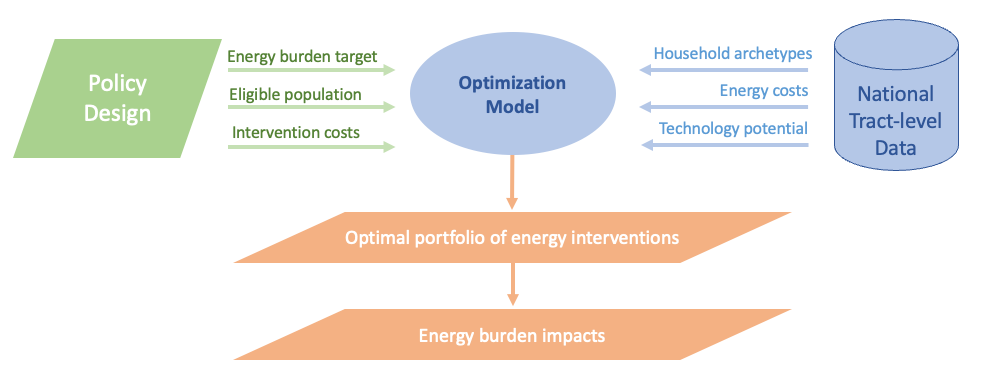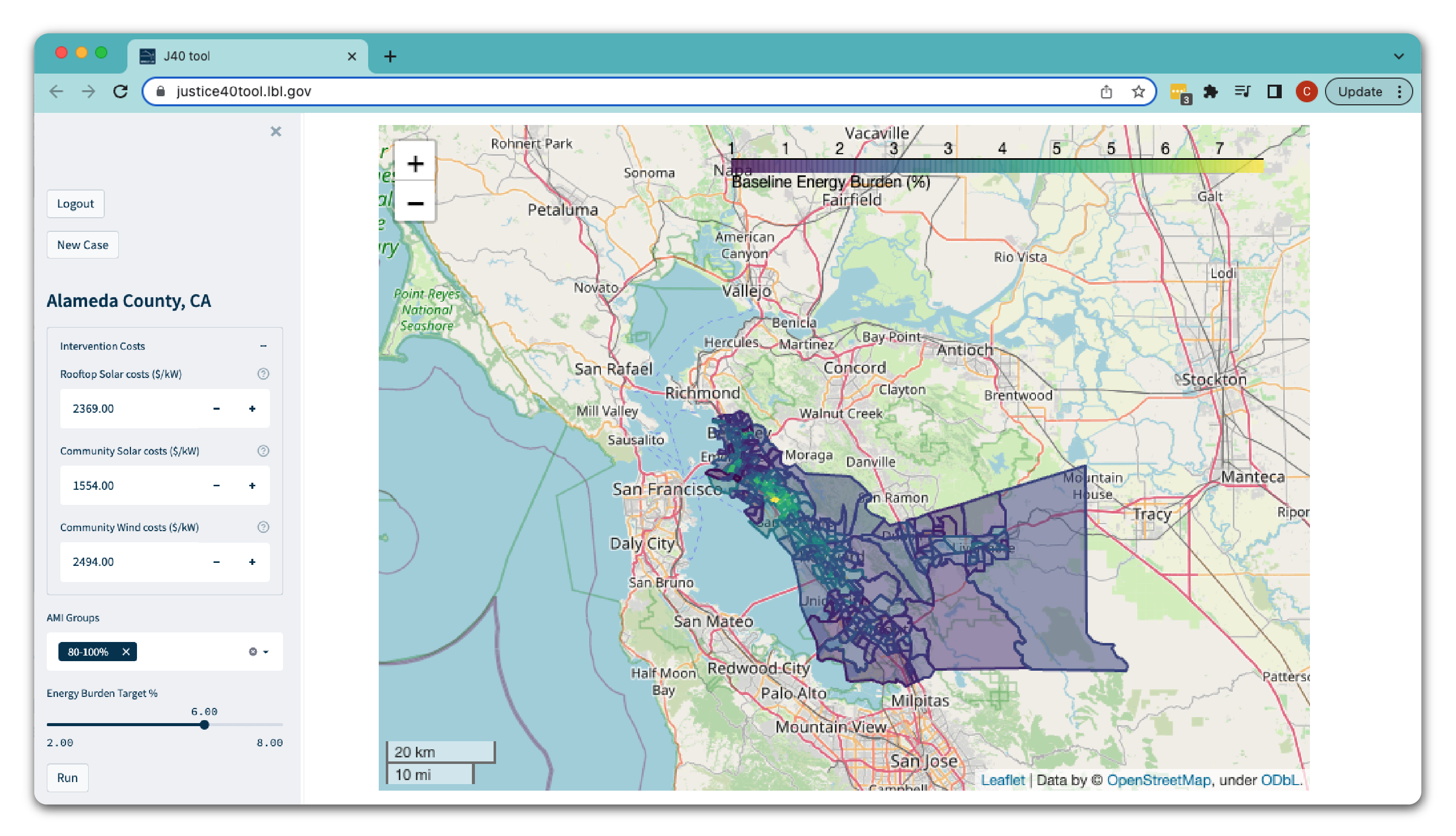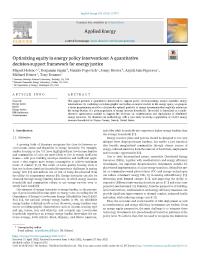Justice 40

Background and Motivation
There is an historic relationship between socioeconomic status and energy insecurity in the United States. Studies have shown that low-income households and communities of color are more likely to live in energy inefficient homes – with poor building envelope insulation and inefficient appliances – that require more energy consumption to achieve minimum levels of comfort. In the US, nearly 28 million households are energy burdened as measured by expenditures exceeding 6% of household income on energy.
Existing energy infrastructure planning methods tend to ignore socio-demographic attributes of different locations. A tool that can assess place-based energy interventions is necessary to ensure equitable implementation of energy infrastructure.
Objective
The goal of this tool is to offer decision makers an optimal portfolio of policy interventions that explicitly mitigates energy insecurity of a user-defined population by reducing its energy burden.
- Energy burden is defined as the percentage of gross household income spent on energy costs (e.g. heating, cooling, electricity)
- Energy insecurity is defined as the inability of a household to meet its basic heating, cooling, and energy needs due to an energy burden above a certain threshold (normally 6%).

Energy Burden as a Metric of Energy Insecurity in the U.S.

About the Model
The model captures the combined effect of a set of energy infrastructure interventions - weatherization, rooftop solar, community solar, and community wind - on the energy burden of different sociodemographic groups. For each census tract, the model chooses the least cost combination of interventions to address the energy burden, considering the specific population demographics and techno-economic potentials of energy technologies. This model is formalized as linear optimization, with technology deployment constraints.















